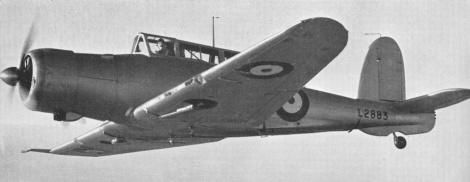Dinger's Aviation Pages
SKUA POSTSCRIPT.
The following is a press release from the Fleet Air arm museum at Yeovilton from some years ago. - When the press release disappeared from the Museums website I decided to preserve it here for future reference.
The control column of a Blackburn Skua was recently handed over to the aircraft's original pilot, the then Lt Alexander Beaufort Fraser Harris, at a ceremony held at the Fleet Air Arm Museum. Klas Gjolmesli and other staff from the Norwegian Aviation Museum in Bodo made a special visit to return the control column, which will be used in a reconstruction of the Skua at Yeovilton.
Telegraphist air gunners George Russell and Dickie Rolph from 803 Squadron were also on hand to witness Fraser Harris receiving the same control column which he had last seen on 25 April 1940 when he and George Russell were forced to ditch the Skua in a Norwegian fjord after a dawn raid on Trondheim Harbour.
The Skua was the first Royal Naval Monoplane fighter and the first purpose built British dive bomber. The Fleet Air Arm [sic¹ ] had been quick to come to Norway's aid with its carrier-borne Skua squadrons and now the Museum, which can provide information, drawings and background on the Skua, and the Norwegian Aviation Museum - which has salvaged many of the parts - are helping one another to rebuild two Skuas. One Skua will be kept at the Yeovilton museum and one in Norway, and these are likely to be the only two in existence.
The original flight to Trondheim was made from HMS Glorious, which lay off the Norwegian coast. Pilot Fraser Harris and gunner George Russell were two hours into their mission in Skua 7G when a stream of tracer bullets struck the fuselage. Shortly afterwards the oil pressure gauge dropped to zero and the engine cut. In view of the mountainous nature of the country, the pilot decided to land in a small fjord. Both men swam to shore unhurt. Local villagers witnessed the descent of the Skua and initially both pilot and gunner were pelted with rocks as they were mistaken for Germans. When the Norwegians realised that they were Allies, the men were rescued and taken to a nearby farmhouse to thaw out, where they were given warm clothing and food. Disguised in Norwegian dress, the following 24 hours saw both men undertake the 69 mile trek over the mountains to escape the advancing German forces.Melting snow made heavy work of the journey and they alternated between walking and skis - although their efforts at this art were not very successful. After being smuggled aboard a Norwegian fishing boat, eventually they reached Namsos harbour where they were transferred to HMS Calcutta and shipped safely home.
¹ Pedantic I know, but officially the "Fleet Air Arm" was renamed the "Air Branch of the Royal Navy" in 1939 and did not revert to its former name until 1953.

